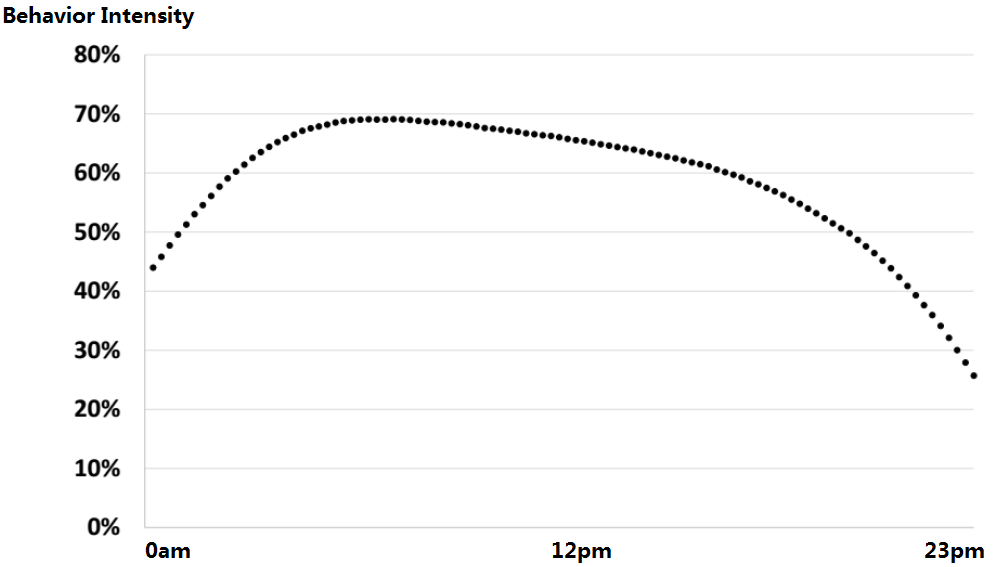I am predicting a user behavior at any hour of a day given the behavior before two hours. For instance, given the behavior intensity at 9am and 10am, I want to predict the behavior intensity at 11am.
The dataset contains daily behavior intensity of different users. For one single user, the days are not continuous. Thus, each day can be considered as an independent time series.
I find that the average behavior intensity of a day is like a concave curve. That is, the behavior intensity is low at night and early morning. It becomes high during the day.
My questions:
1) Is it stationary or non-stationary?
2) For non-stationary time series, the prediction outcome is dependent to the time stamp. In this case, to deal with non-stationary, instead of using ARIMA, can I use multi-order autoregressive model and add time stamp as one feature? (because in my case, time stamp are limited, i.e, 24 hours)
Or even feature interactions?
3) If the answer to the second question is NO. When building ARIMA, what kind of differencing method I can try for my data?



